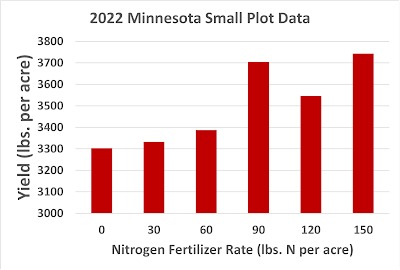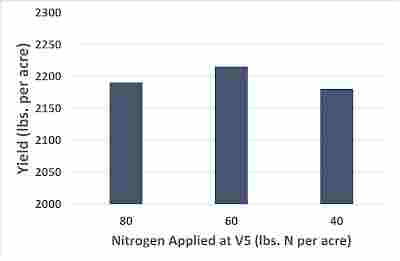By Dan Kaiser
Dry beans are an important commodity crop in Minnesota, with around 250,000 acres planted in 2020 and 2021. No major research efforts have been put into the evaluation of the fertilizer guidelines for dry bean in Minnesota in nearly twenty years, underscoring the need for an update.
Why is new research needed?
Current fertilizer guidelines for dry beans in Minnesota are yield goal based so technically any dry bean classes that would be higher yielding would necessitate modifications in a dry bean grower’s normal fertilizer practice. However, in researching other crops, we have found that yield potential is not strongly related to the amount of fertilizer required. This has caused a shift away from fertilizer guidelines based on expected yield, especially for nitrogen. While it is plausible that nitrogen rates required to maximize dry bean yield have not changed, more recent research could be beneficial as black bean acreage is increasingly across the state. In addition, concerns over yield loss due to lack of N and the increased potential for yield loss due to disease from over-application of nitrogen highlight the growing need for refined fertilizer guidelines for dry beans. The Minnesota publication for dry bean fertilizer guidelines has been updated recently but the fertilizer rate suggestions remained unchanged from past publications.
Recent research
Funding from the Northarvest Bean Growers has enabled us to take another look at the dry bean nitrogen guidelines. Two research trials were established in 2022. This research is the start of work in Minnesota and may vary from one site to the next. One major goal of this work is to compile as much current and past nitrogen response data as possible into a larger nitrogen response database. The results are from only one year and should be considered preliminary findings. More data is needed before we consider revising the fertilizer guidelines.
The first trial consisted of a series of small plot nitrogen rate trials comparing the nitrogen requirements of kidney, pinto and navy beans to that of black beans. Three trials were in farmers’ fields (two non-irrigated fields south of Willmar and one irrigated field near St. Cloud). The goal of this work was to evaluate yield response at various N rates up to 150 pounds. The three-site average (two planted to black bean and one navy bean) showed greater yield up to 90 pounds of nitrogen per acre. The amount of nitrogen in the soil at the time fertilizer was applied was measured but that data is not factored into the data yet.

A second trial was established at a field near Staples to look at reduced nitrogen rates for dry bean production under irrigation. Treatments were applied in large block areas (60 feet wide by 450 feet long) comparing various N rates applied around the V5 growth stage. We compared three rates:
- The farmer’s standard practice: 80 lbs of N applied at V5 (plus 56 lbs of N applied as a combination of pre-plant, starter, and post-V5 fertigated N) for a total of 136 lbs of N applied
- Reduced rate #1: 60 lbs of N applied at V5 (plus 56 lbs of N applied as a combination of pre-plant, starter, and post-V5 fertigated N) for a total of 116 lbs of N applied
- Reduced rate #2: 40 lbs of N applied at V5 (plus 56 lbs of N applied as a combination of pre-plant, starter, and post-V5 fertigated N) for a total of 96 lbs of N applied
Common bacterial blight was present in the field, which reduced yield. Analysis of the data showed no statistical differences between the standard practice and the two reduced fertilizer rates. Actual yield values were within 35 lbs of each other, or about a 1.5% variation in yield among the treatments.

Source : umn.edu